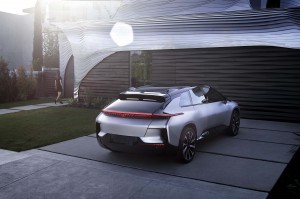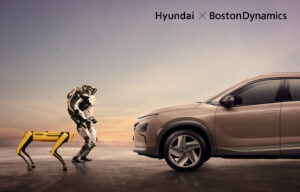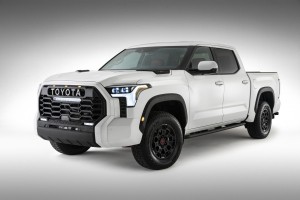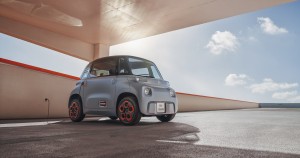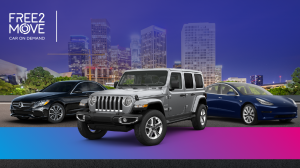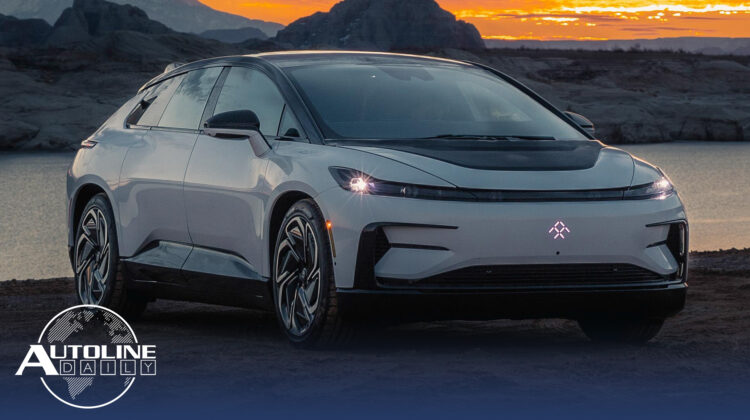
Listen to “AD #3105 – Faraday Could Start Production Soon; Porsche To Develop Battery Cells for Motorsports; Toyota Teases New Tundra” on Spreaker.
Follow us on social media:
Runtime: 9:04
0:08 Porsche To Develop Battery Cells for Motorsports
0:56 Volvo & Northvolt Form Battery Joint Venture
1:22 Faraday Future Could Start FF91 Production Soon
2:14 Hyundai Completes Boston Dynamics Acquisition
3:08 VW To Integrate 3D Printing in Production Process
3:54 Toyota Teases the New Tundra
4:17 eVTOL Racing Series Launched
5:44 GM Fuel Cell to Make Water for Airplanes in Flight
6:20 Why Stellantis Is Experimenting with The Citroen Ami In the U.S.
Visit our sponsors to thank them for their support of Autoline Daily: BorgWarner, Bridgestone, Intrepid Control Systems and Schaeffler.
This is Autoline Daily, the show dedicated to enthusiasts of the global automotive industry.
PORSCHE TO DEVELOP BATTERY CELLS FOR MOTORSPORTS
Porsche is forming a battery cell joint venture with Customcells for high-performance vehicles. Called Cellforce Group, it will be based in Germany with Porsche owning a majority stake of nearly 84%. The cells rely on silicon as the anode material, which will allow Porsche to boost the power density of the battery, while decreasing its size and weight. But the company points out the cells don’t perform well in freezing weather and don’t remain stable for years over many charging cycles. However, the cells are ideal for motorsports. Porsche plans to eventually reach a minimum production capacity of 100 MWh for the new battery cells, which is the equivalent of batteries for 1,000 vehicles.
VOLVO & NORTHVOLT FORM BATTERY JOINT VENTURE
And in related news, Volvo is forming a joint venture with Swedish battery company Northvolt, to develop and produce more sustainable batteries. They will open an R&D center next year in Sweden and plan to start producing the batteries in 2026. The goal is to hit a production capacity of 50 GWh per year. The batteries will be used for both Volvo and Polestar vehicles.

Faraday Future has certainly had its ups and downs and we’re still not sure if it’s going to survive, but the company says production of the FF91 could start relatively soon. Faraday is looking to generate additional funding through a merger with a special purpose acquisition company or SPAC. It says once that merger happens it will be ready for production within 12 months at its plant in California, which has the capacity for 10,000 vehicles a year. But that’s not the only place it plans to make vehicles. Faraday is also collaborating with South Korean company, Myoung Shin, which is known for making car parts, to contract manufacture additional vehicles at an old GM plant. You may remember as well that Faraday is exploring contract manufacturing with Geely and Foxconn in China.
HYUNDAI COMPLETES BOSTON DYNAMICS ACQUISITION
It’s now official. Hyundai announced it completed its acquisition of Boston Dynamics from Softbank. Hyundai is purchasing the robotics company to develop a robotics value chain, from robot component manufacturing to smart logistics solutions.
VW TO INTEGRATE 3D PRINTING IN PRODUCTION PROCESS
Volkswagen plans to integrate 3D printing in its production process. But it came up with a new technique to create the parts. Traditional 3D metal printing uses lasers to build a part layer by layer with metallic powder. But VW’s process, called binder jetting, uses an adhesive. The component is then heated and shaped. VW says it not only increases productivity and is more cost effective, but it reduces the weight of parts by 50% compared to ones made from sheet steel. VW is currently making the A pillar used in the T-Roc convertible with the new process and by 2025 it plans to 3D print 100,000 components a year at its main plant in Wolfsburg, Germany.
TOYOTA TEASES THE NEW TUNDRA
Big, bold and blocky. That’s what we think of the new Toyota Tundra. The pickup features a much larger grille with TOYOTA spelled out in big letters and what looks like some kind of light bar just below it. This is the only picture we have of the new Tundra and have no other information, but we expect to see and learn more soon.
eVTOL RACING SERIES LAUNCHED
Electric drones or what they call eVTOLs may soon be taking to the skies. A new eVTOL racing series, called Airspeeder, has done its first test flights and received a certification for experimental aircraft in Australia. Called the Alauda Mk3, the eVTOL weighs only 130 kg or about 285 pounds, can do 0-60 in under 3 seconds and has a top speed of 200 km/h or 124 MPH. It features a swappable battery pack that can be changed in under 20 seconds and each pack has enough juice to last for 10-15 minutes. The first races, which will be piloted remotely, are scheduled to take place this year. There’s even a collision avoidance system to make sure they don’t crash into each other.
GM FUEL CELL TO MAKE WATER FOR AIRPLANES IN FLIGHT
Last week we reported that General Motors is working with the German company Liebherr Aerospace to develop fuel cells for airplanes. The first application will be to provide electric power inside the aircraft and to make water. It turns out that the average commercial jet takes off with two tons of water on board to use in bathroom sinks and to flush toilets. And since the main byproduct of a fuel cell is water, it can be used to make water in flight. So the fuel cell can provide electricity and make water at the same time and it cuts the weight of the aircraft.
WHY STELLANTIS IS EXPERIMENTING WITH THE CITROEN AMI IN THE U.S.
The Citroen Ami is coming to the U.S. market. But it’s not for sale. It’s an experiment that Free To Move is trying out. That’s the car-sharing service that started out as part of Peugeot and is now part of Stellantis. Right now Free To Move is operating in Washington DC and Portland, Oregon. But it’s already profitable and it’s going to expand to two more cities this year. Customers use an app to find a car, drive it, and park it in any public spot they want. But Free to Move wants to drive down costs even more. So it’s experimenting with the Ami to provide low cost urban mobility. Larry Dominique was on Autoline After Hours last week. He now runs Alfa Romeo North America, but before that he was running Free To Move and here’s what he had to say about the Ami.
Larry Dominique: We’re doing a little trial right now in DC with some consumers looking at the Ami, which is a little electric mobility vehicle we have.”
John McElroy: “That is a cool car!”
Joe White: “I don’t know that one, is that a Peugeot?”
Larry Dominique: “No, in Europe it’s a Citroen. Basically we call it an urban mobility vehicle. It’s a little vehicle. It’s electric. It has about 50 miles of range. We’re just testing it with consumers to see ‘Could this work in the inner city, urban kind of transportation’? So we’re trying to test new hypotheses–have no idea whether we’re going to be bringing it here or not. It’s a low speed vehicle. It can’t go over 25 miles per hour. But you know, how can we innovate, how can we get the cost of mobility as a service to a point where consumers can afford it and operators can actually make a profit?”
Larry Dominique goes on to say that car sharing only works in the right cities, with the right density, and right car ownership. For example, 60% of their user base in Washington DC does not own a car. If you don’t get those things right, you won’t have the right cost structure. There’s a lot of great information in that show. Most of it is about Alfa Romeo. And a programming note here, Autoline After Hours will be off this week.
And that wraps up today’s report. Thanks for watching.
Thanks to our partner for embedding Autoline Daily on its website: WardsAuto.com
Seamus and Sean McElroy cover the latest news in the automotive industry for Autoline Daily.





